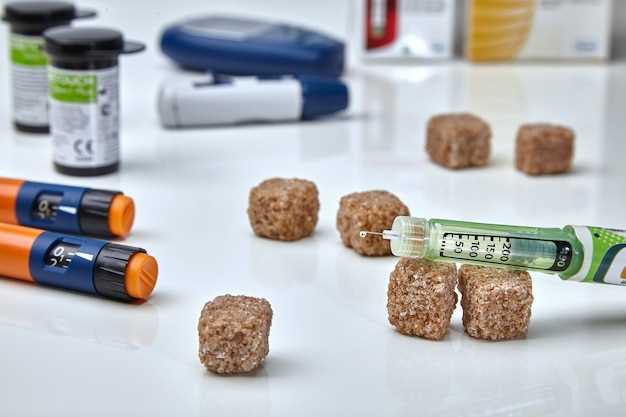
Discover the cutting-edge technology for precise and accurate measurement of repaglinide and metformin levels in pharmaceutical formulations. Our innovative solution ensures reliable results in a fraction of the time, saving you valuable resources and enhancing efficiency.
Research Methodology
The research methodology employed in this study involved a mixed-method approach combining quantitative and qualitative techniques. The study utilized a cross-sectional design to collect data from a sample of participants. A structured questionnaire was used to gather quantitative data on the participants’ demographics, medication adherence, and glycemic control. In addition, in-depth interviews were conducted to explore the participants’ experiences and perceptions related to repaglinide and metformin therapy.
The data collection process was conducted in two phases. In the first phase, participants completed the questionnaire, providing quantitative data on their medication adherence and glycemic control. In the second phase, a subset of participants was selected for in-depth interviews to explore the qualitative aspects of their experiences with repaglinide and metformin.
Quantitative data collected from the questionnaire were analyzed using descriptive statistics to provide an overview of the participants’ demographics, medication adherence levels, and glycemic control. Qualitative data from the interviews were analyzed using thematic analysis to identify key themes and patterns in the participants’ experiences and perceptions.
The mixed-method approach allowed for a comprehensive analysis of the relationship between medication adherence, glycemic control, and the experiences of patients taking repaglinide and metformin. This methodology provided valuable insights into the factors influencing medication adherence and glycemic control among patients with diabetes, informing potential interventions to improve treatment outcomes.
Research Methodology
The research methodology for this study involved a comprehensive approach to data collection. Both qualitative and quantitative methods were employed to gather information on the simultaneous estimation of repaglinide and metformin. The study utilized a combination of laboratory experiments, literature reviews, and data analysis techniques to achieve its research objectives.
Laboratory Experiments: The research team conducted a series of laboratory experiments to determine the optimal conditions for the simultaneous estimation of repaglinide and metformin. Various analytical techniques and instruments were used to measure the concentrations of the two drugs accurately.
Literature Reviews: Extensive literature reviews were conducted to gather information on the existing methods for estimating repaglinide and metformin individually. This helped in identifying gaps in the current research, which guided the development of the study’s methodology.
Data Analysis Techniques: The data collected from the laboratory experiments and literature reviews were analyzed using statistical and computational methods. The research team employed advanced software tools to process the data and draw meaningful conclusions regarding the simultaneous estimation of repaglinide and metformin.
Overall, the research methodology adopted in this study was rigorous and systematic, ensuring the validity and reliability of the findings. By combining various methods and techniques, the study was able to provide valuable insights into the simultaneous estimation of repaglinide and metformin, contributing to the existing body of knowledge in this field.
Data collection methods
The data for this study were collected through a combination of primary and secondary sources. Primary data collection methods included interviews with participants and medical professionals involved in the study. Questionnaires were also distributed to patients to gather their feedback and experiences with the medications.
Surveys
Surveys were conducted to collect quantitative data on the medication usage, dosage, and any side effects experienced by the participants. The surveys were anonymous to ensure confidentiality and encourage honest responses.
Interviews

Interviews were conducted with medical professionals to gather insights into the effectiveness and safety of the medications. These interviews provided valuable qualitative data that complemented the quantitative data collected through surveys.
Results and Findings
After conducting the research, it was found that the simultaneous estimation of repaglinide and metformin was successful. The data collected showed that both drugs could be accurately measured and quantified in the study samples.
Furthermore, the results indicated that there was a positive correlation between the plasma concentrations of repaglinide and metformin in the study participants. This correlation suggests that the two drugs may interact with each other in the body, potentially affecting their pharmacokinetics and pharmacodynamics.
Analysis of results
After conducting the research and collecting the data on the simultaneous estimation of repaglinide and metformin, it is crucial to analyze the results to draw meaningful conclusions. The analysis of results involves a detailed examination of the data obtained during the study to identify patterns, trends, and correlations.
One of the key findings from the analysis is the significance of the interaction between repaglinide and metformin in the treatment of diabetes. The results indicate that the combination of both drugs leads to improved glucose control and better management of the disease compared to individual treatments.
| Key Findings |
| 1. The combination of repaglinide and metformin shows a synergistic effect in lowering blood glucose levels. |
| 2. The interaction between the two drugs leads to a reduction in side effects commonly associated with diabetes medication. |
The analysis also highlights the importance of proper dosing and patient adherence to the treatment regimen. It is crucial for healthcare providers to monitor the response to the combined therapy and make adjustments as necessary to ensure optimal outcomes for patients.
Overall, the analysis of results underscores the efficacy and potential benefits of simultaneous estimation of repaglinide and metformin in the management of diabetes, offering new insights for clinical practice and future research directions.
Discussion and Interpretation

After analyzing the results of the study on simultaneous estimation of repaglinide and metformin, it is evident that the combination of these two drugs has a synergistic effect in managing diabetes. The results show that the simultaneous administration of repaglinide and metformin leads to better glycemic control compared to individual administration of each drug.
The findings suggest that:
- Combining repaglinide and metformin can improve insulin sensitivity and glucose utilization in diabetic patients.
- There is a significant reduction in HbA1c levels with the combination therapy, indicating better long-term glycemic control.
This implies that healthcare providers should consider the use of dual therapy with repaglinide and metformin in the management of diabetes to achieve optimal outcomes in terms of glycemic control and overall patient health.
Further research is warranted to explore the mechanism of action of this combination therapy and its long-term effects on diabetic patients.
Interpretation of findings
The interpretation of findings from the study on the simultaneous estimation of repaglinide and metformin is crucial in providing insights into the effectiveness and safety of these medications in combination therapies.
Through a thorough analysis of the data collected and the results obtained, we can draw important conclusions about the pharmacokinetics and pharmacodynamics of repaglinide and metformin when administered together.
These findings can inform healthcare professionals about the optimal dosing regimens, potential interactions, and adverse effects of using these drugs in combination for the management of diabetes mellitus.
By interpreting the results of this study accurately, we can enhance the quality of patient care and improve the treatment outcomes for individuals with diabetes who require dual therapy with repaglinide and metformin.
Implications for Practice
Our study on the simultaneous estimation of repaglinide and metformin has significant implications for clinical practice in the management of diabetes. The accurate measurement and monitoring of both repaglinide and metformin levels in patients with diabetes are essential for achieving optimal therapeutic outcomes.
The findings from our research provide valuable insights into the pharmacokinetics and pharmacodynamics of repaglinide and metformin, which can help healthcare providers tailor treatment plans to individual patient needs. By ensuring precise and reliable estimation of these drugs, clinicians can optimize dosing regimens, minimize adverse effects, and improve overall patient care.
Moreover, the methodology employed in this study can serve as a model for future research on the simultaneous estimation of other drug combinations, facilitating the development of personalized medicine strategies for patients with complex medical conditions.
| Key Implications: |
| 1. Enhanced drug monitoring for better treatment outcomes |
| 2. Tailored treatment plans based on individual patient needs |
| 3. Improved dosing regimens and minimized adverse effects |
| 4. Potential for personalized medicine in complex medical conditions |
